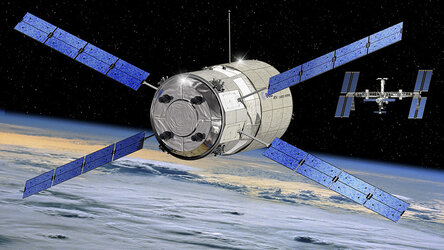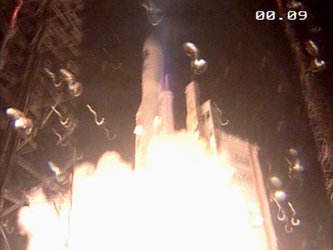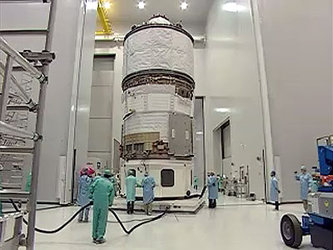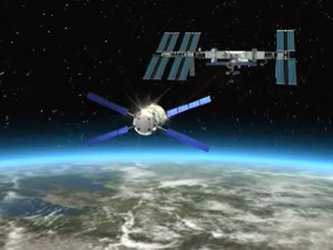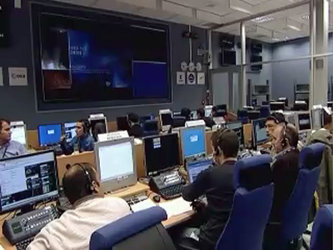Jules Verne boosts ISS orbit
ESA's Jules Verne ATV was used for the first time early this morning to raise the orbit of the International Space Station. A 740-second burn of the Automated Transfer Vehicle's main engines successfully lifted the altitude of the 280-tonne Station by around 4.5 km to a height of 342 km above the Earth's surface.
After the ATV Control Centre (ATV-CC) in Toulouse, France, had 'woken up' Jules Verne ATV, the manoeuvre started at 06:22 CEST (04:22 GMT) this morning and provided a 2.65 m/s thrust using two of the ATV's four main engines. Controllers at ATV-CC closely monitored ATV's subsystems throughout the long manoeuvre.
"The Station's altitude naturally decreases with atmospheric drag. Until now this has been compensated for by performing a re-boost using the Russian Progress, the Space Shuttle or by the ISS itself," explains Alberto Novelli, ESA’s Mission Director at ATV-CC. "Today, ATV has successfully demonstrated that it too is able to perform this vital function. Only Progress and ATV can provide this high level of re-boost. ATV is unique due to the quantity of fuel available for such manoeuvres."
The re-boost manoeuvre comes just three weeks after Jules Verne ATV successfully docked with ISS on 3 April 2008 delivering 1150 kg of dry cargo, including food, clothes and equipment, as well as additional supplies of water, oxygen and fuel. Since then, the European ISS resupply spacecraft has been in dormant mode attached to the docking port on the Russian Zvezda module.

Today's re-boost sets up the International Space Station for the arrival of Space Shuttle Discovery on the STS-124 mission to deliver the Japanese Kibo laboratory. STS-124 is currently targeted for launch on 31 May 2008. Further re-boost manoeuvres using ATV are scheduled for 12 June, 8 July and 6 August.
Jules Verne ATV is scheduled to remain docked to the International Space Station until early August. At the end of its mission, Jules Verne, loaded with up to 6.5 tonnes of material no longer required by the ISS, will undock and then burn up completely during a guided and controlled re-entry high over the Pacific Ocean.



